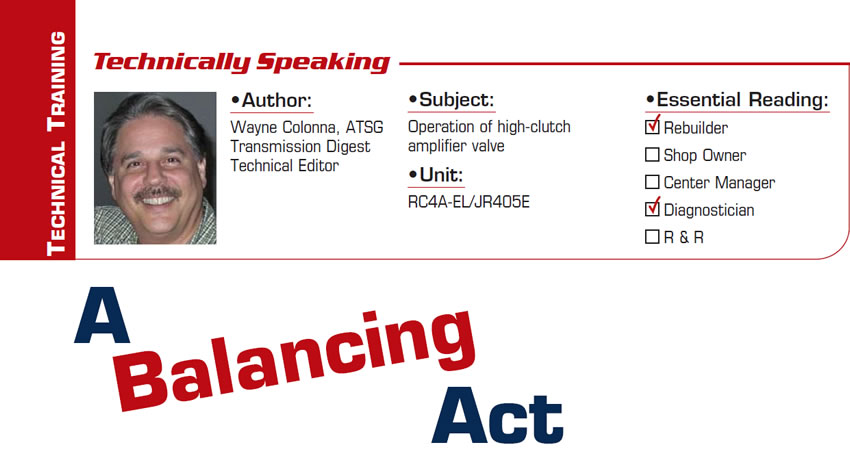
Technically Speaking
- Subject: Operation of high-clutch amplifier valve
- Unit: RC4A-EL/JR405E
- Essential Reading: Rebuilder, Diagnostician
- Author: Wayne Colonna, ATSG, Transmission Digest Technical Editor
Here in the United States there is a four-speed, computer-controlled automatic transmission called the RC4A-EL or the JR405E (Figure 1), used in Mazda’s RX8 vehicle from 2003 to 2006. According to year-end sales reports provided by Automotive News, about 60,000 of these cars were sold and are on the road today. So chances are one may show up in your shop for repairs.
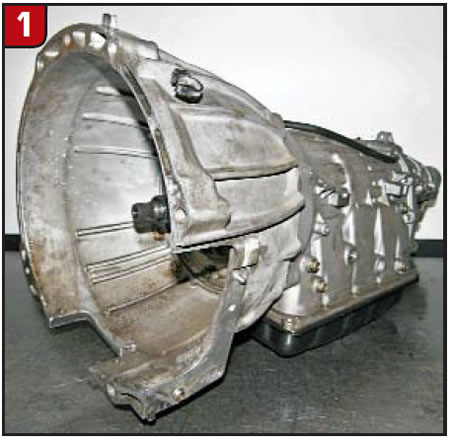
There is very little information written about this transmission concerning the valve body and its associated hydraulic operations. For this reason ATSG has produced a Technician Guide that provides extensive information including valve-body mapping and a complete set of hydraulics. In the process of developing this guide, we discovered a unique way in which this unit controls clutch application. The high-clutch amplifier valve in the upper valve body (Figure 2) serves as a perfect example.

This valve is fed with line pressure directly from the manual valve (Figure 3) as soon as the Drive range is selected.
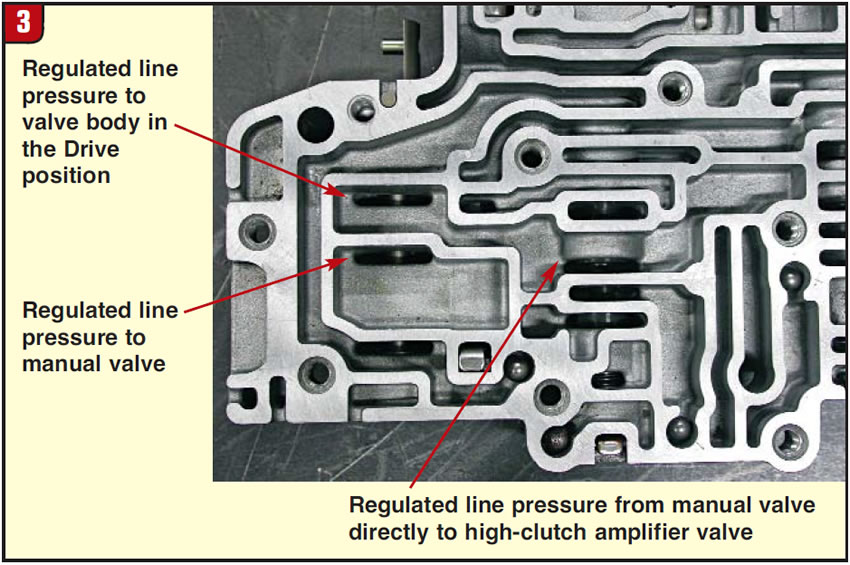
This is when and where one of the balancing acts that occur in the valve body begins. The high clutch is off in 1st and 2nd gears and is applied in 3rd and 4th. Shift solenoid C is used to stroke this high-clutch amplifier valve. This is a duty-cycle-type solenoid (50Hz) that is normally applied, meaning that when the duty cycle is high the clutch is off and when the duty cycle is low the clutch is on.

Putting these parameters together, Figure 4 is a partial hydraulic schematic of what this looks like in Drive 1st and 2nd gears.
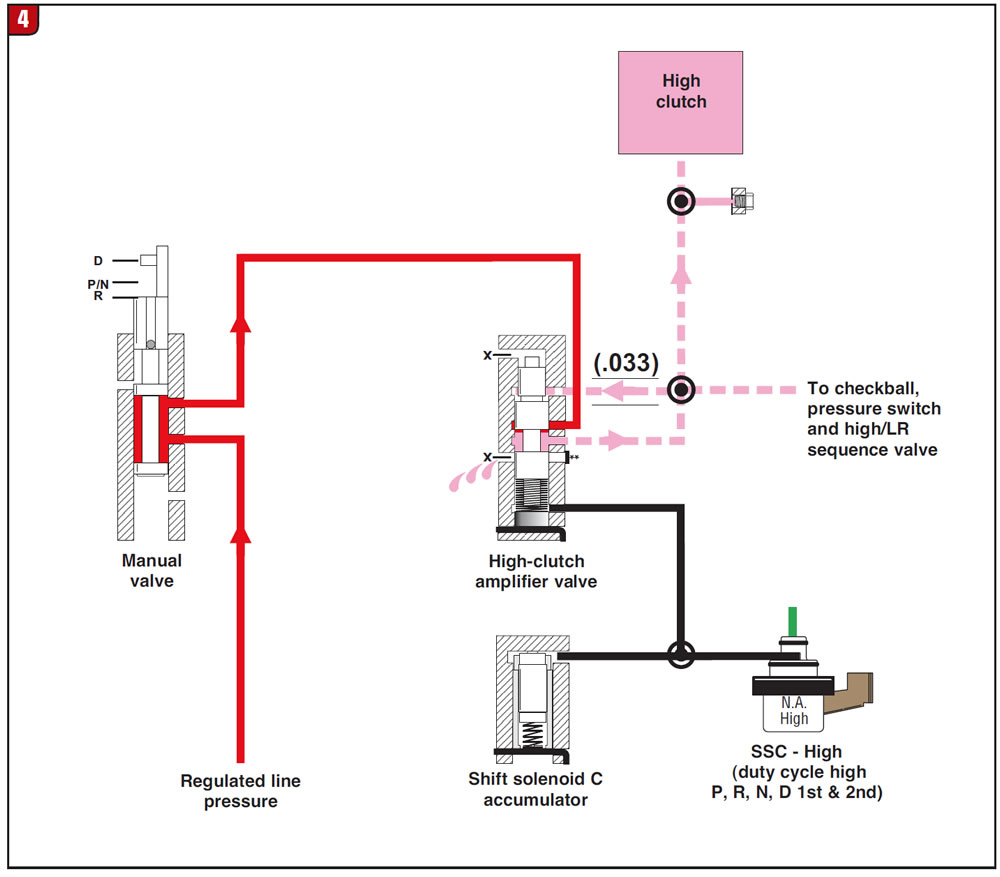
Regulated line pressure from the manual valve goes directly to the high clutch amplifier valve, where it then is directed to the high-clutch apply passage. But it is also routed to the back end of the valve through a 0.033-inch orifice. This closes the line-pressure feed to the valve while opening the apply path to an exhaust. The spring on the valve weighs only a couple of ounces but apparently has enough tension to close the valve, which again opens the line-pressure feed to the apply path and the cycle repeats itself (Figure 5).
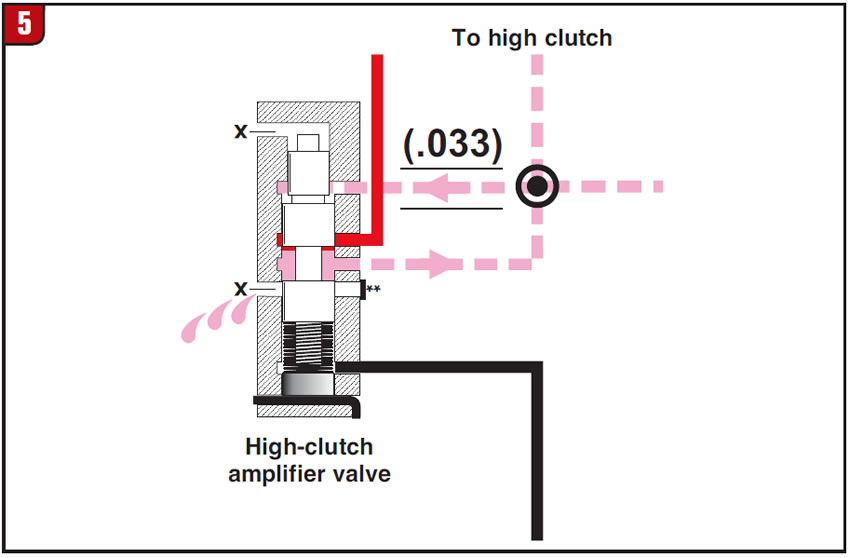
This balancing act between feed and exhaust seems to provide pre-fill clutch pressure so that when the circuit is actually charged (Figure 6), the clutch applies sooner since it does not have to fill a dry apply passage.
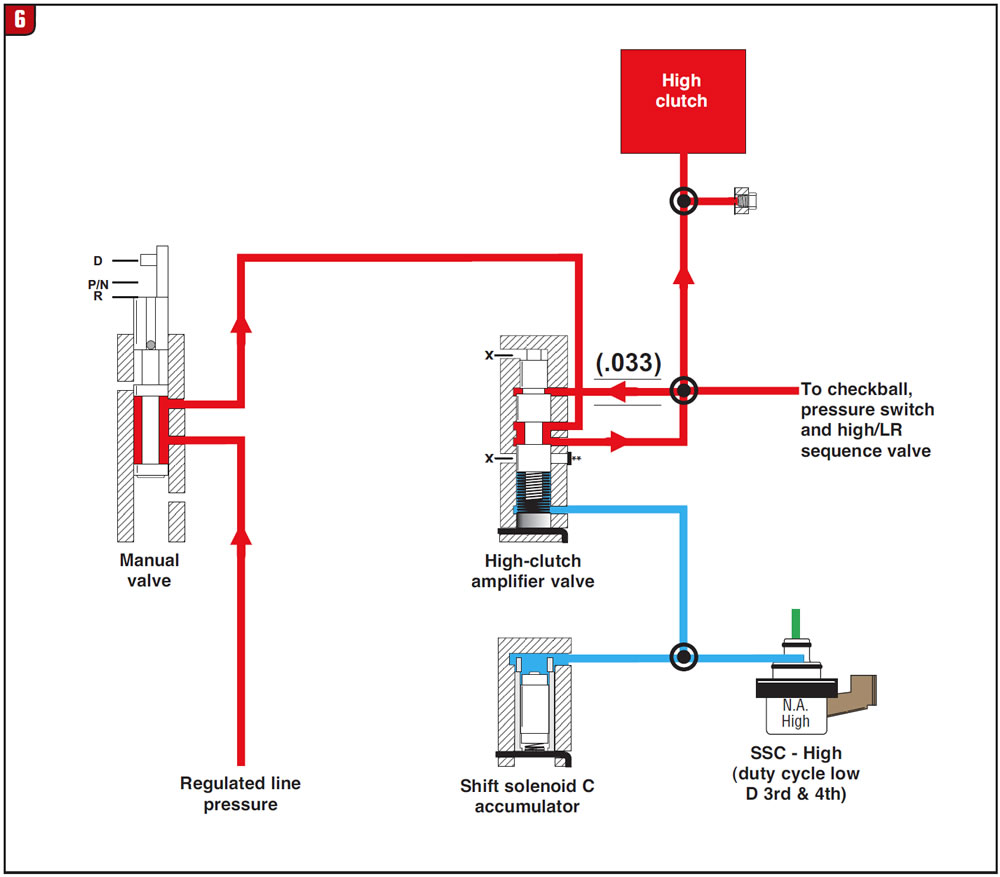
Several obvious conditions must be met for this balancing act to work properly; otherwise, the high clutch could apply prematurely. The clutch circuit is monitored by a pressure switch rated at 50-70 psi, which is high enough to allow lesser pressure to be present without notifying the computer. For example, 10 to 15 psi is well below the pressure-switch rating but could easily drag the clutch in 1st and 2nd, taking it out in a relatively short time.
So if one of these units finds its way into your shop with high-clutch failure, be sure to check the integrity of this valve lineup (bore plug, valve bore etc.) and the mechanical operation of the solenoid and pressure switch. There is a low-clutch and 2-4-clutch amplifier valve that functions in this same manner, so if either of these clutch assemblies has failed, you would need to make the same inspection of their respective circuits.
Many thanks to Seth and the good folks at AACTION Transmissions in Miami for the use of this transmission.














